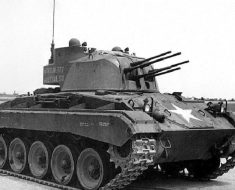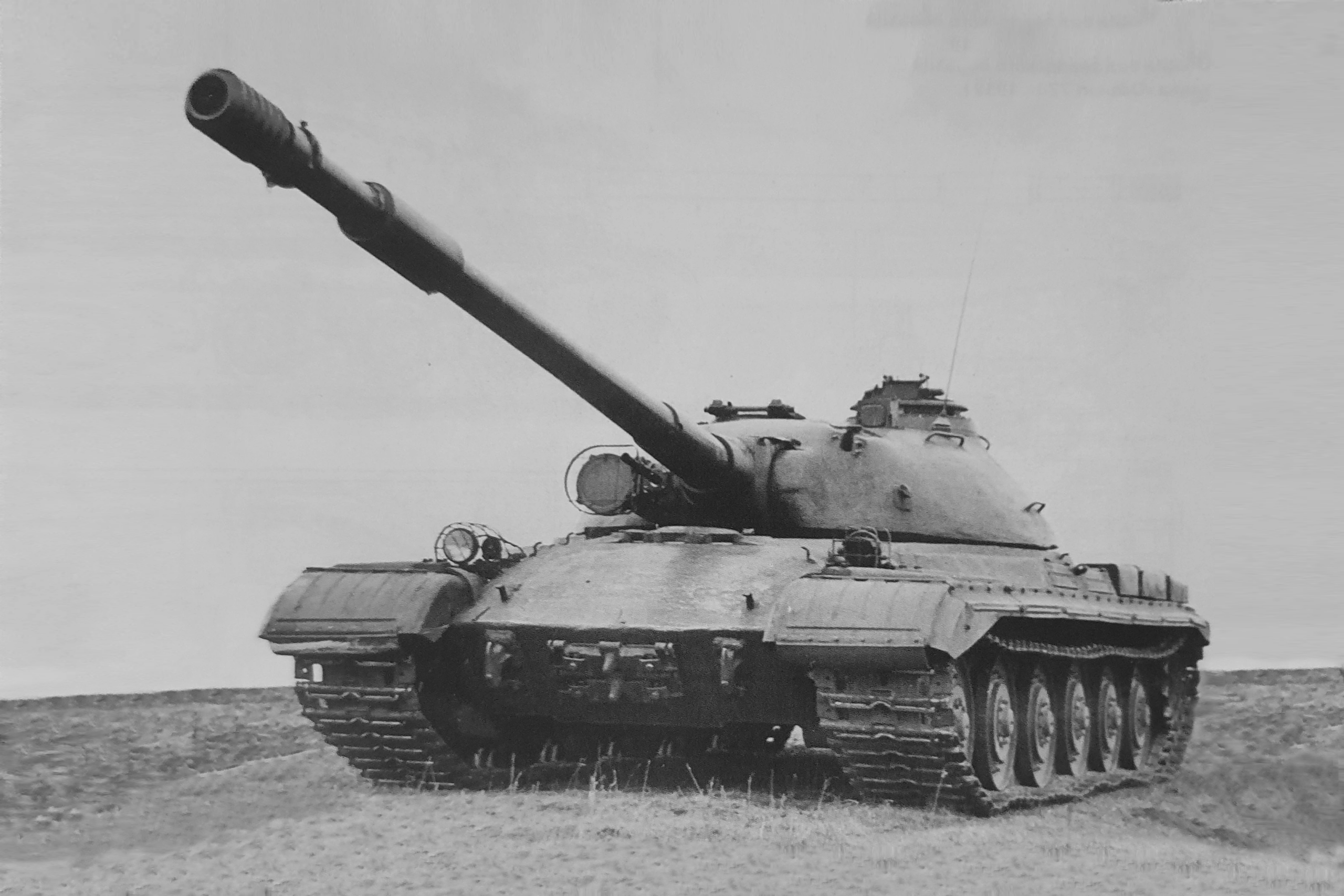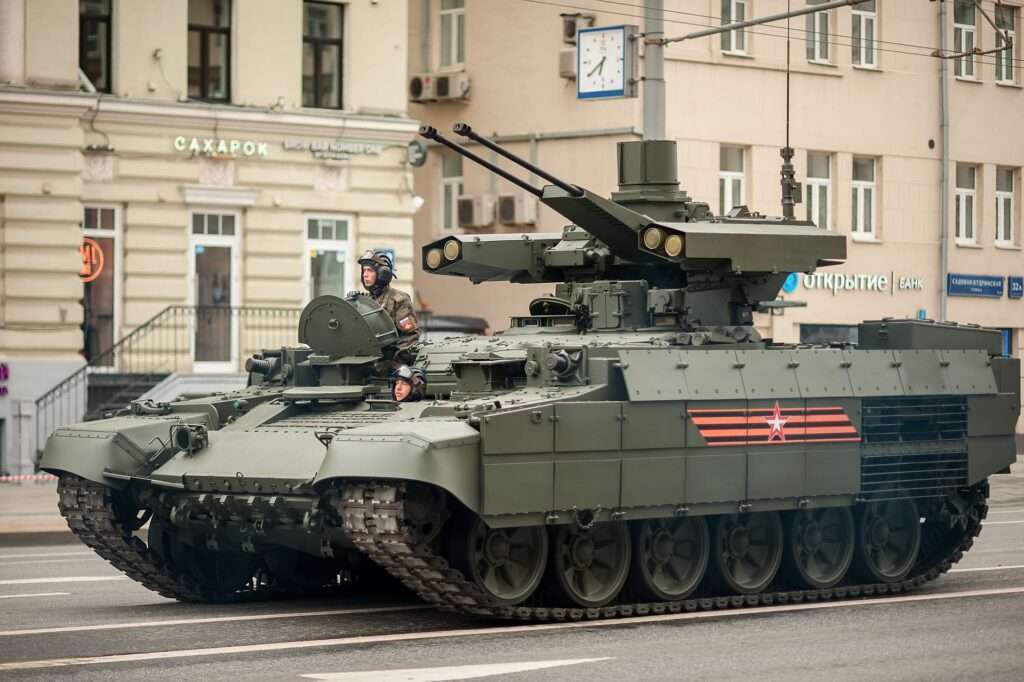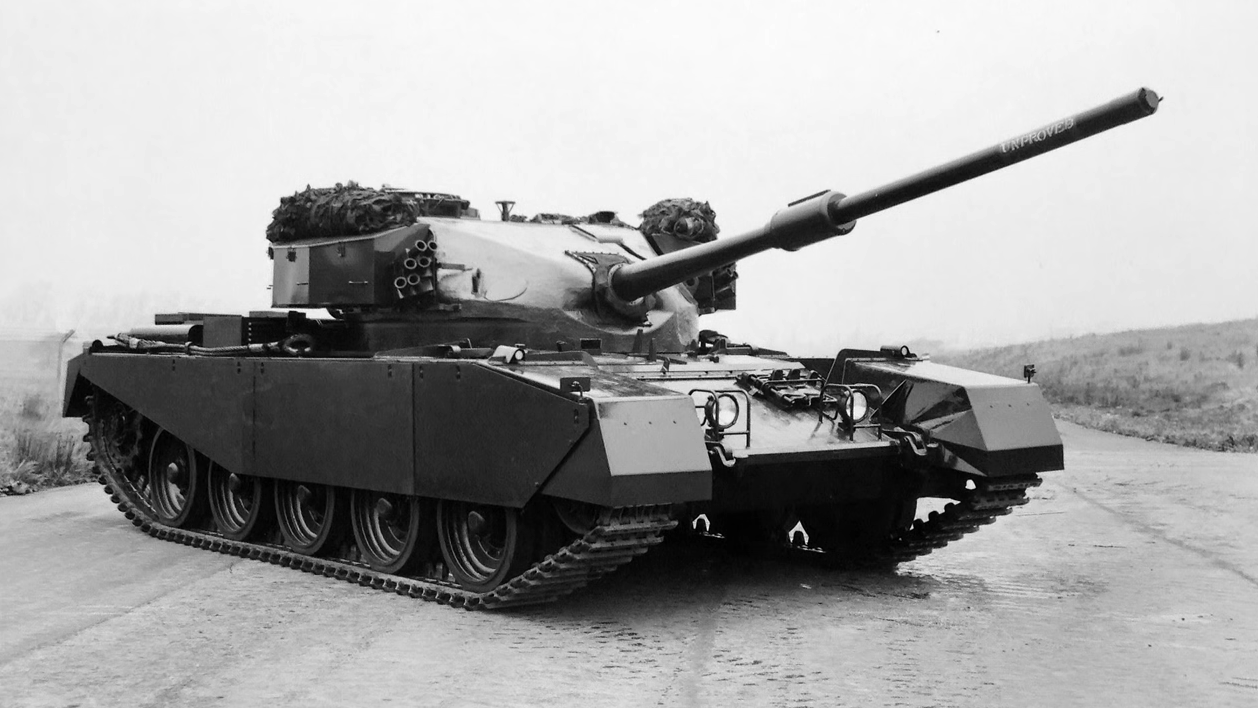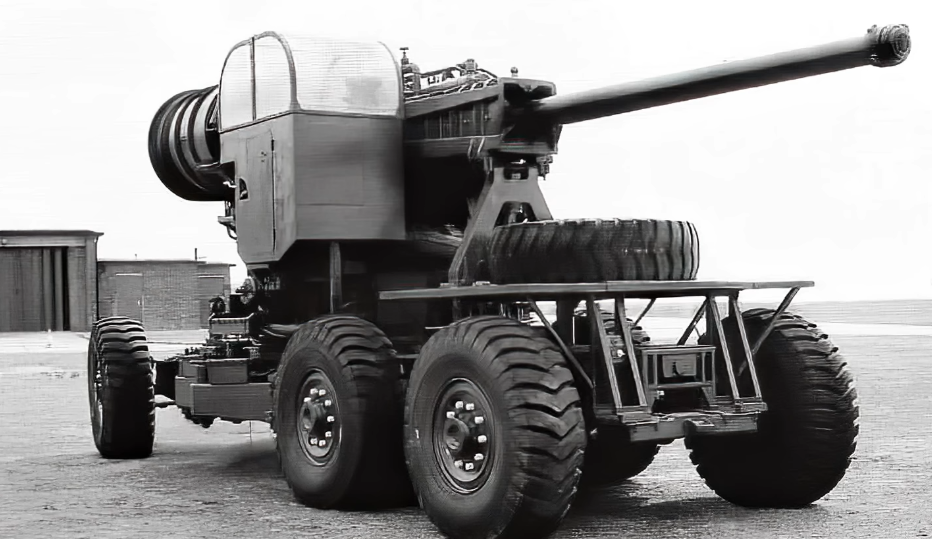This is easily the most sci-fi, Star Wars-looking tank we’ve ever covered, and you’d be forgiven for thinking it isn’t real. But it is real, and its name is the 1K17 Szhatie. Of course, it was produced by the Soviet Union.
This vehicle was the culmination of a strange avenue of research conducted by the Soviets in the 1970s and ’80s: laser tanks.
They are as crazy as you think, capable of delivering an electronic-frying punch from over 10 km away at the speed of light. These terrifying weapons were real, and were actually operational in the 1980s and 1990s.
Contents
Military Lasers
Lasers are often seen as a sci-fi technology, but militaries around the world have been playing with them for decades.
They are commonplace in many non-lethal applications these days. However, there’s been a long-running interest in using lasers as offensive tools.
Lasers have lots to offer in this role: they are pinpoint accurate, travel at the speed of light, and don’t use ammunition in the conventional sense. Today, militaries only use lasers offensively as dazzlers, which target enemy optics to blind them.
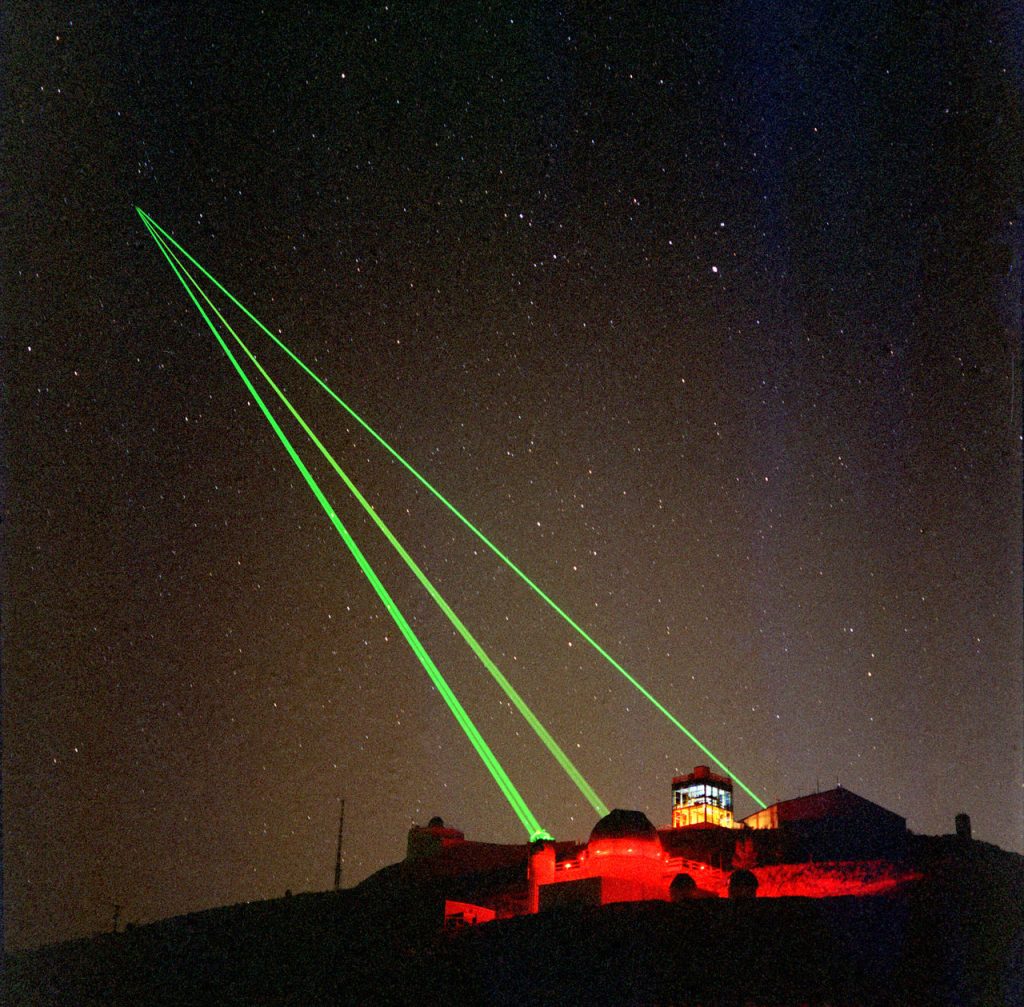
But despite a huge amount of research going into laser weapons, they have not yet become a standard item in militaries’ arsenals.
There are a number of reasons for this, and most are inherent characteristics of lasers. One of the biggest issues is blooming, which is where a laser loses energy as it passes through the atmosphere.
Additionally, lasers need lots of power. This can be cumbersome and limit their practicality.
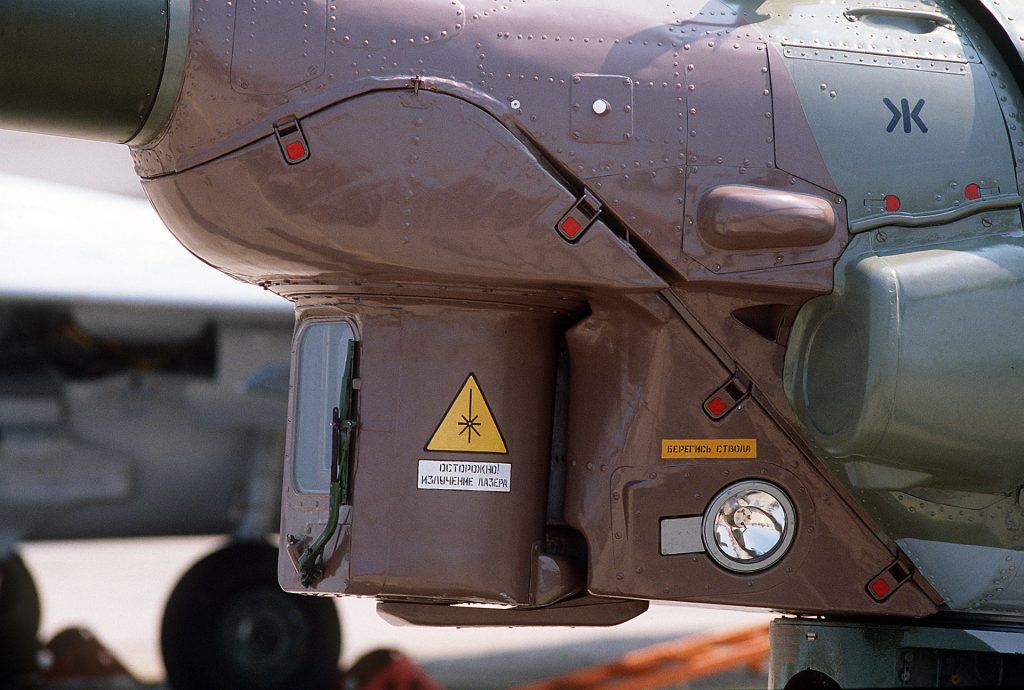
But there are also ethical issues due to their ability to easily render a person blind – some can do this instantly. Condemning someone to a lifetime of blindness, long after a conflict has ended, is regarded as inhumane by many.
As a result, the United Nations issued a convention in 1995 that banned the use of weapons that intentionally blinded the enemy. This was signed by both the United States and Russia.
However before Russia was, well, Russia, the Soviet Union had been playing with the idea of placing powerful lasers on tanks to destroy enemy optics from great distances.
Heading this work was Nikolai Dmitrievich Ustinov, a talented scientist, physicist and engineer that had a keen interest in lasers. While Ustinov was a very gifted individual, his career was certainly helped by his father, Dmitry Ustinov, who was the Minister of Defense and one of the most powerful men in the USSR.
With his father having essentially limitless power in the military procurement sector, the younger Ustinov received plenty of funding for his work.
Soviet Laser Tanks
In the 1980s he introduced the Object 312, better known as the 1K11 “Stiletto” SLK (SLK meaning self-propelled laser complex).
Read More The Freakiest Anti-Aircraft Half-Tracks
The 1K11 was based on a spare GMZ minelayer (itself based on the SU-100P platform), and featured a powerful laser inside a turret on top.

The purpose of this machine was to counter optics and sensors on enemy systems, like tanks and aircraft.
The 1K11 would search for targets using a radar, and then once it found one, began bombarding its sensitive optical equipment with a highly focused laser beam.
Not only could it destroy this equipment, it could also affect the crew. The laser was aimed horizontally by a traversable turret, and vertically with mirrors. A 400 hp motor was fitted to the 1K11 to power the laser.
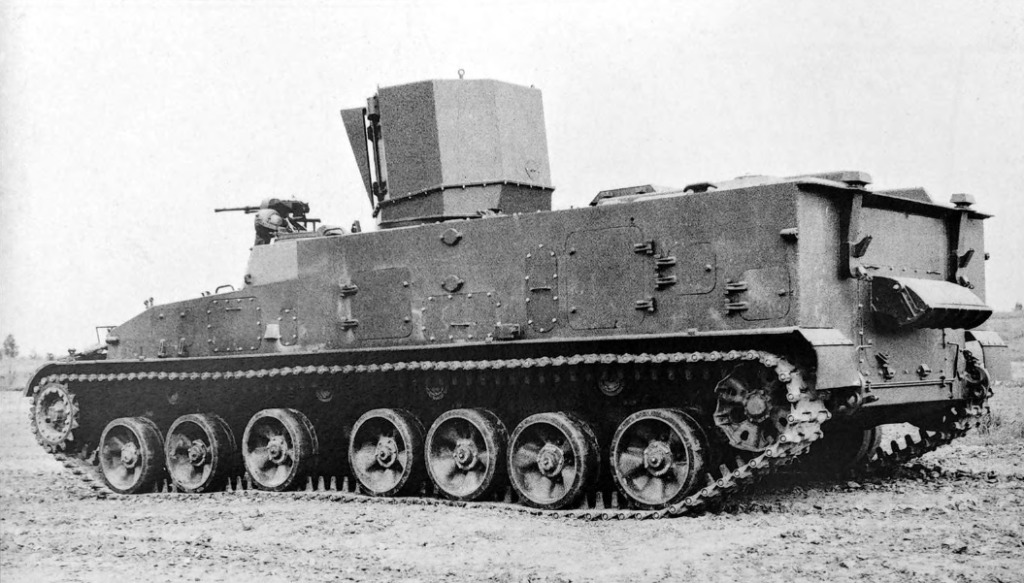
Only two were made.
The Sanguin SLK came the following year, bringing a number of improvements. The Sanguine was based on the famous Shilka, with its four 20 mm guns replaced with a laser. Functioning similarly to the 1K11 Stiletto, the Sanguine could destroy enemy optics up to 10 km away.
It also discarded the mirrors used for vertical aiming on the 1K11, with the laser itself now being capable of elevating up or down.
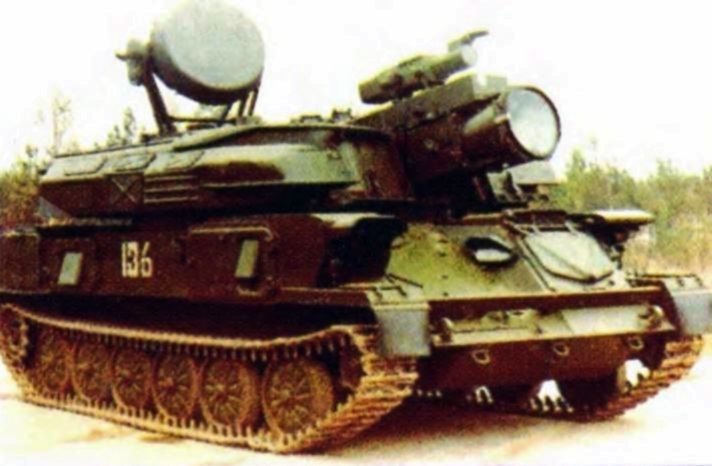
However the problem with both the 1K11 and Sanguin is that they only had a single laser each. After identifying the wavelength of these lasers, an enemy could simply shield their optics and eyes with filters that block that particular wavelength.
Ustinov’s team would eventually solve this with the 1K17 “Compression”, the final vehicle of the series.
Sadly much of the data for the 1K17 is still classified, so we only have limited information.
1K17 “Compression”
Work on 1K17 Szhatie (meaning “Compression”) began in the late 1980s, and a prototype arrived in 1992. It brought with it 12 separate lasers in a huge turret.
The lasers were arranged in two rows of six at the front of the turret, and were powered by a separate motor at the rear of the turret. To house such a monstrous arrangement, the 1K17 was built from a 2S19 Msta-S, the newest Soviet self-propelled gun at the time.
Read More Switzerland’s Centi Bunkers – Centurion Turrets in the Swiss Mountains
The 2S19 uses a modified T-80 tank hull, and this remains essentially unchanged on the 1K17. Only the turret was modified, being lengthened to accommodate the lasers and power unit.
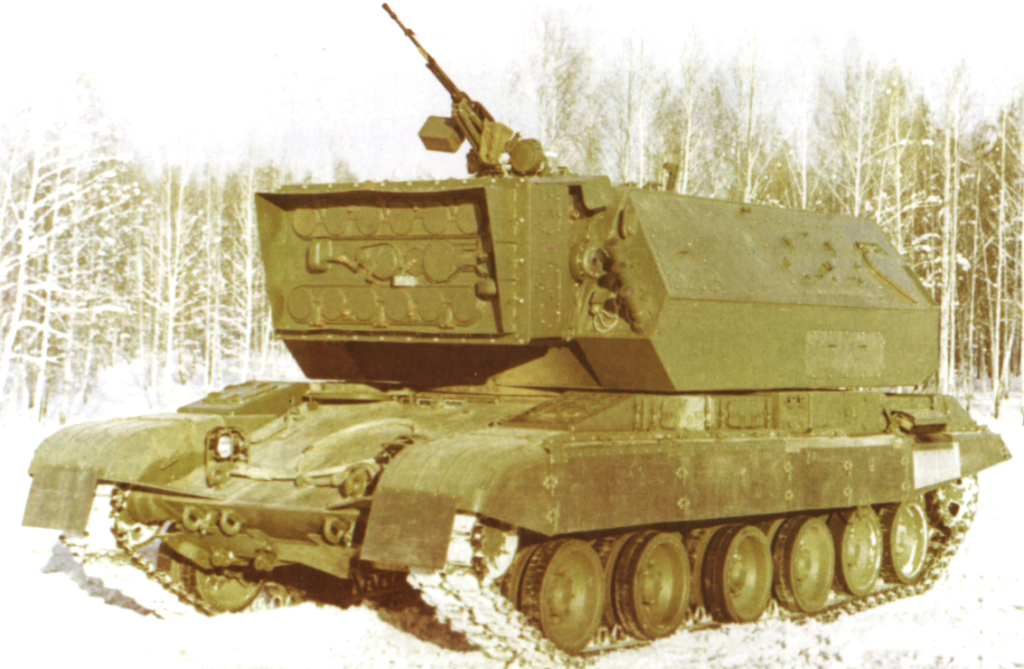
In addition to the lasers, the front of the turret also has ports for a laser range finder, night and day sights, as well as an optic for aiming. All ports were protected by armored shields when not in use.
A quick bit about lasers: lasers work by pumping energy into a “medium”, such as a ruby, until the atoms inside release photons (particles of light).
The medium is sandwiched between two mirrors, and as the photons travel back and forth between them through the medium they stimulate the release of more photons of the same wavelength in a chain reaction.

These uniform photons exit the medium as a laser beam. Okay, so that’s a very simplified explanation of a laser, but it’s important because the medium used in the 1K17 is not exactly known.
One of the most popular answers (probably because it sounds the coolest) is that the lasers’ mediums are 30 kg synthetic rubies.
Now, this has been argued by some to be untrue. Instead, it has been suggested that the 1K17 more likely used yttrium aluminum garnet (YAG) crystals for the medium. Lasers are not our area of expertise – so any lasers experts reading, feel free to chime in on this!
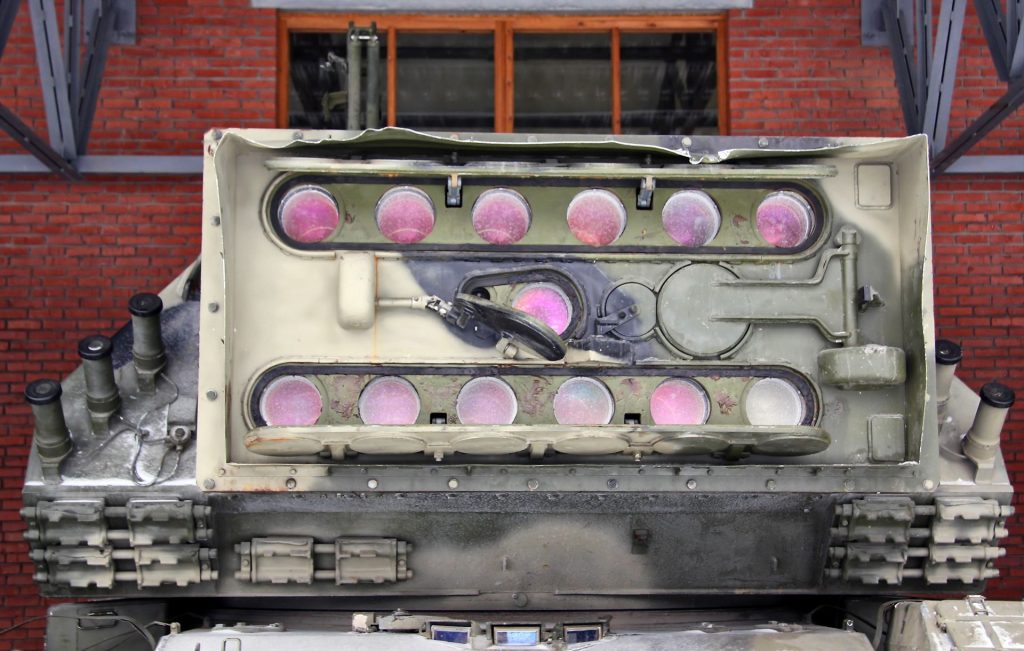
With all that said, the 1K17 was extremely powerful. Its 12 lasers could fire in different wavelengths, making filters useless.
We have no figures for the range or general performance of the 1K17’s lasers, but we can safely assume it was much more capable than the previous vehicles.
Read More The Myth of German Technological Superiority
The lasers were mounted in a large box-like assembly at the front of the turret, which can elevate up and down on a trunnion like a conventional tank gun. For horizontal movement, the entire turret turns, also like a conventional tank.
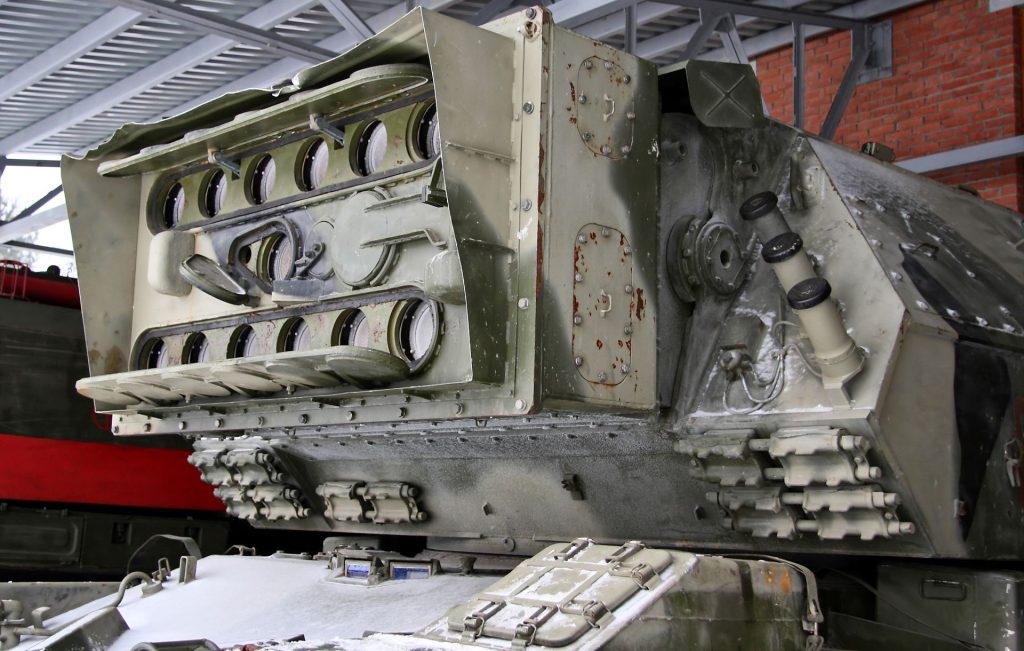
Inside the 1K17 is a crew of three, with a driver in the hull and another two operators in the center of the turret.
As mentioned, the rear of the turret was occupied by bulky generators and an engine to power the lasers. This was so large that the already-large turret of the 2S19 had to be extended to accommodate it. Lasers are very inefficient, converting only a small quantity of the input energy into a laser beam, so they need a big power source.
This large turret made the 1K17 a big machine, with a height of 2.9 meters compared to 2.2 meters of a standard T-80. However as it lacked a barrel, it was much shorter, at 7.3 meters long. Its width of 3.8 meters is the same as a T-80.

Overall it weighed 42 tons, and with a 780 hp V-84A V12 diesel engine, had a top speed of 37 mph (60 kph).
The End of the Laser Tank
The completed machine was tested, and appears to have satisfied. Assuming a range of 10 km (it was much likely far higher), the 1K17 would have been able to blind tanks long before they could even fire back.
The ability to simply point at an enemy tank or helicopter and fry its sensors – and potentially blind the crew – made it a terrifying weapon. In fact, the team that designed it were awarded the State Prize of the Russian Federation for their work.
So why don’t we see laser tanks rolling around the fields of Ukraine? Well, it turned out that laser weapons have a few more drawbacks than one might would think.
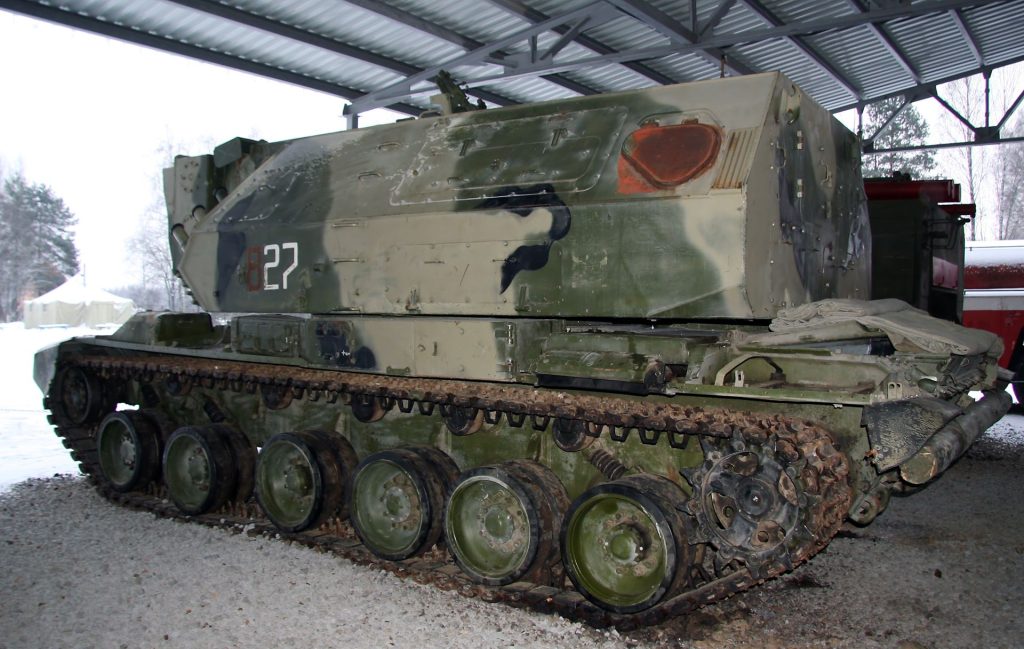
There are the basic issues, such as the bulk and logistical burden of carrying around the powerpacks and generator equipment needed to power the lasers. This requires a larger vehicle that is more complex, fuel-thirsty, and a bigger target.
Then there are cost problems – laser vehicles are exceptionally expensive. Whatever the medium used inside the 1K17’s lasers, it will be very pricey.
Read More The M22 Locust is One of the Smallest Tanks Ever
But one of the most important, is that they aren’t actually that useful. In certain scenarios it can be a deadly weapon, such as on a clear day with direct line of sight, but the lasers’ effectiveness can be reduced by simple things like fog, rain and snow.
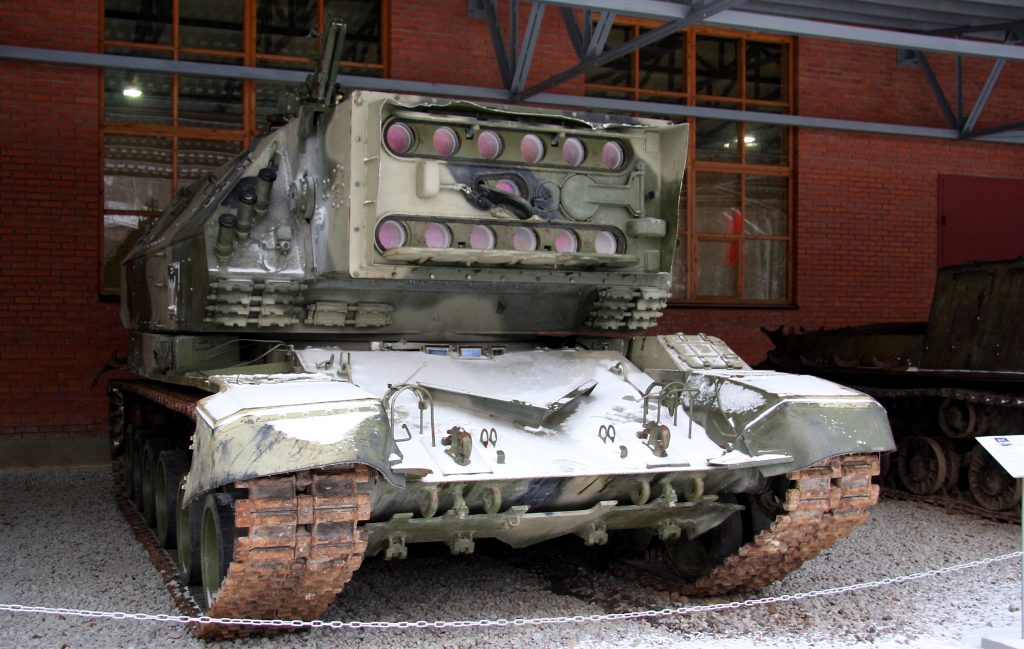
Physical barriers, like fences, vegetation etc. can make this even worse. They also wouldn’t have any affect against older analogue systems as long as the crew aren’t exposed to them.
In addition, on flat ground, a target 10 km away would actually be below the horizon, so vehicles like the 1K17 can’t even fully utilise their own maximum range against ground targets.
And while the upper range limit of the 1K17 is very far, it probably wont surpass that of conventional artillery guns or missiles, to which it has no defense.
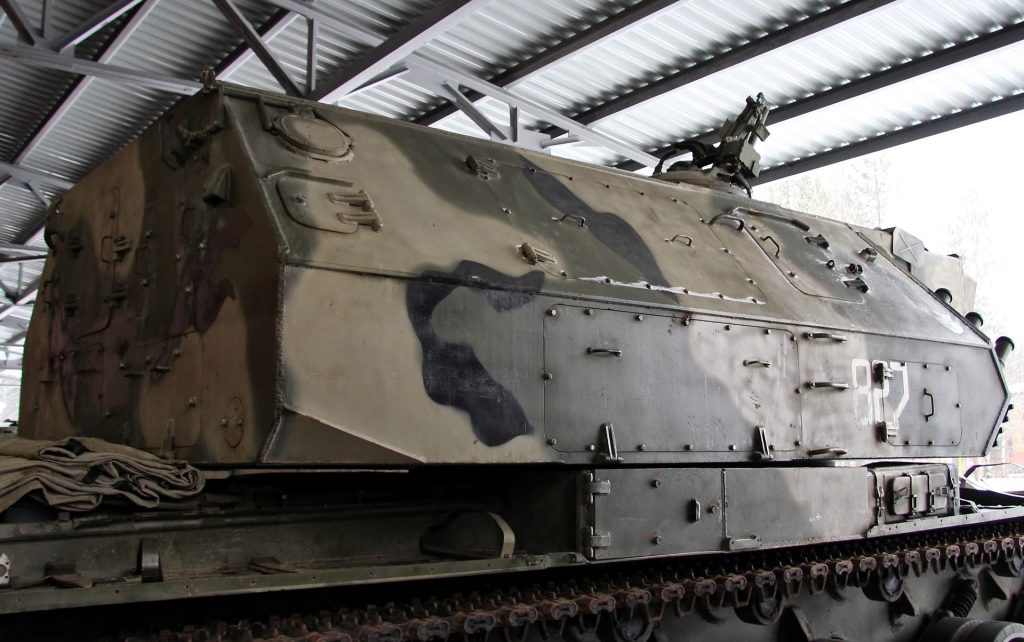
Finally there are ethical reasons. As we mentioned near the start, laser weapons are frowned upon in the international community. Ironically, the 1K17 wouldn’t be banned under the UN’s protocol against laser weapons as its purpose is not to harm humans, but Russia may have wanted to avoid the criticism a machine this like may have brought.
In the end only a single machine was built, and it, as with all the laser tanks, was a highly secretive piece of technology.
While we don’t have an official reason for why the Russians abandoned the project, it was likely due some, or all of the reasons above. Russia was reeling from the collapse of the USSR, and projects like the 1K17 were simply too expensive, too impractical, and too controversial to be worthwhile at the time.
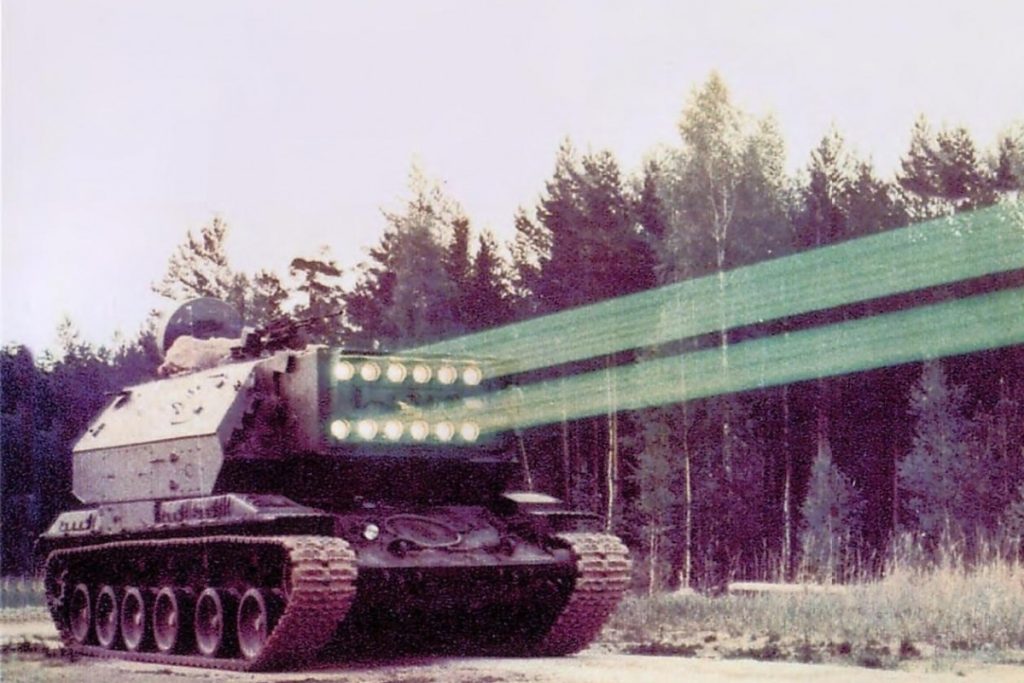
The sole 1K17 disappeared for a while, before suddenly reappearing at the Military Technical Museum near Moscow, where it still resides today.
Read More M50 Ontos – the Vietnam Six-Shooter
It isn’t clear if Russia have attempted to produce anything similar in the years since the 1K17, although many Russian sources claim that the technology certainly hasn’t been lost, and that they have produced even more capable machines.


